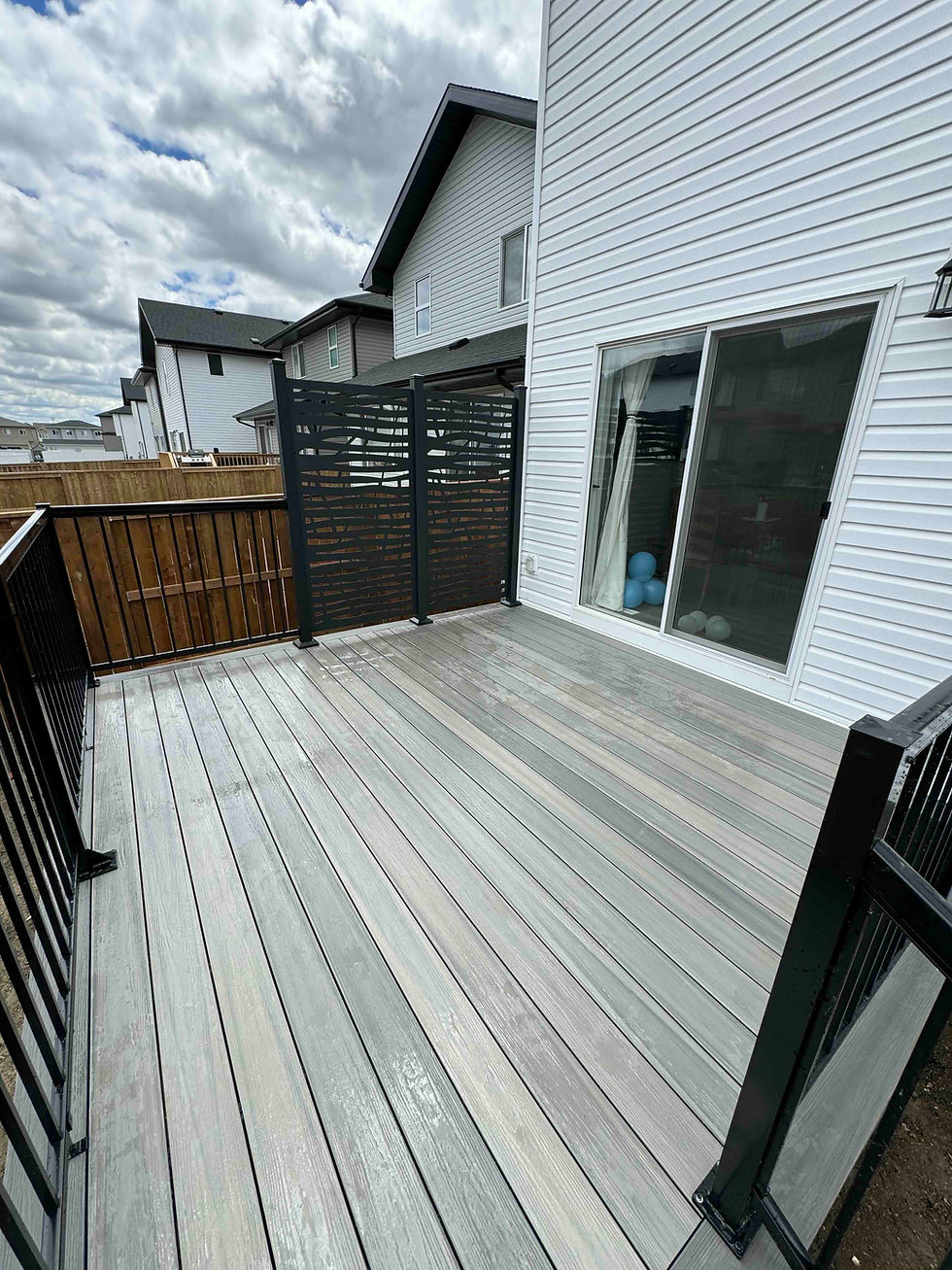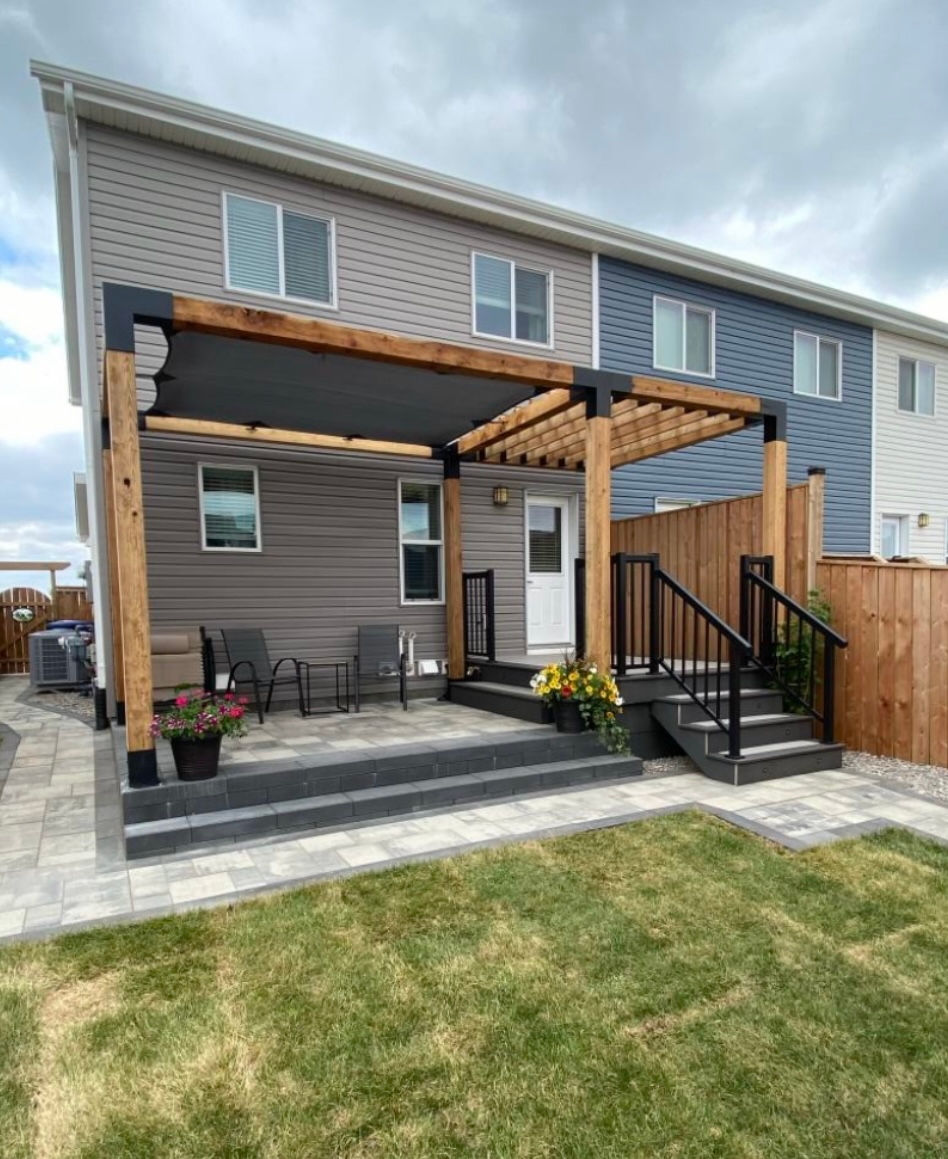Composite vs. Wood Decking: Which Is Right for You?
- Prairie Fortress
- Mar 31
- 1 min read
Updated: Apr 1
Choosing between composite and wood decking is one of the biggest decisions homeowners face when planning a new deck. Both materials have their advantages, and the best choice depends on factors such as budget, maintenance preferences, and climate conditions.
Durability & Longevity

Composite Decking: Made from a blend of wood fibers and plastic, composite decking resists rot, mold, and insect damage, lasting 25+ years with minimal upkeep.
Wood Decking: Natural wood can be durable, but it requires staining and sealing to prevent weather damage. Lifespan varies depending on wood type, usually 10–15 years.
Maintenance Requirements
Composite: Requires occasional cleaning with soap and water—no staining or sealing necessary.
Wood: Needs regular staining, sealing, and potential board replacements over time.
Aesthetic Appeal
Composite: Available in various colours and finishes that mimic natural wood without fading or splintering.
Wood: Offers an authentic, warm look and can be stained or painted for customization.
Cost Consideration
Composite: Higher initial cost but lower maintenance expenses over time.
Wood: More affordable upfront, but requires ongoing investment in maintenance.
Final Verdict
If you want a low-maintenance, long-lasting deck, composite is the best option. However, if you prefer the natural beauty and customizability of wood—and don’t mind the maintenance—wood remains a classic choice.
Need expert guidance on decking materials and installation? Contact Prairie Fortress Fence and Deck for professional consultation and high-quality deck solutions tailored to your needs.



Comments